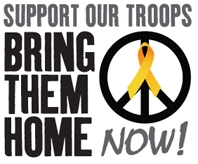Off the Charts

Never underrate the wily Pathan.
What we're going on to now is the wily Pathan,
followed the use of and handling of anti-gas carpet.
The Pathan lives in India. India is a hot, strange country
It's full of wily Pathans and they're up to wily things,
which is why I always wear spurs, even in cold weather.
--How I Won the War (1967)
________________
As a young staff officer trainee Ranger was introduced to briefing techniques that utilized charts, which were a reflection of reality but accepted as THE reality by certain officers.
In B53/5th Special Forces Group, 1970, he remembers the scorn of Captain Norm Dupuis [pron. "Doo - pus"] for charts as a camp-level staff tool. He disdained them as much as Lieutenant Colonel Glock, our commander, loved them. With enough charts and graphs, any war could be won, or so thought Glock, a reflection of the West Point mentality of warfare.
Capt. Dupuis's exasperation summated during one briefing after a particularly long queue of charts in his suggestion that we needed a chart to reflect how many times we used charts.
Fast-forward to 2010 and Power Point, the grandchild of our handwritten charts and graphs (back in the day, every Battalion had a draftsman whose only job it was to create charts and graphs for the daily briefings.) General McChrystal commented on a particularly convoluted power-point slide last summer, "When we understand that slide, we'll have won the war."
The WaPo recently ran a piece disparaging PowerPoint, suggesting it "has crept into the daily lives of military commanders and reached the level of near obsession. The amount of time expended on PowerPoint, the Microsoft presentation program of computer-generated charts, graphs and bullet points, has made it a running joke in the Pentagon and in Iraq and Afghanistan (We Have Met the Enemy, and He is PowerPoint)."
But the joke lies not with the PowerPoint charts, graphs and bullet points; they have their place in condensing a briefing. The joke is the war and our leadership's belief that it can be won, with or without PowerPoints.
Also from the Post article:
“'[PowerPoint is] dangerous because it can create the illusion of understanding and the illusion of control,' Brig. General [H. R.]McMaster said in a telephone interview afterward. 'Some problems in the world are not bullet-izable.'”
"Commanders say that behind all the PowerPoint jokes are serious concerns that the program stifles discussion, critical thinking and thoughtful decision-making. Not least, it ties up junior officers — referred to as PowerPoint Rangers — in the daily preparation of slides, be it for a Joint Staff meeting in Washington or for a platoon leader’s pre-mission combat briefing in a remote pocket of Afghanistan."
"Gen. David H. Petraeus, who oversees the wars in Iraq and Afghanistan and says that sitting through some PowerPoint briefings is 'just agony,' nonetheless likes the program for the display of maps and statistics showing trends."
PowerPoint is useful as long as the statistics are reality-based and the trends clearly understood. However, this is often not the case.
"Commanders say that the slides impart less information than a five-page paper can hold, and that they relieve the briefer of the need to polish writing to convey an analytic, persuasive point. Imagine lawyers presenting arguments before the Supreme Court in slides instead of legal briefs."
This isn't a fair comparison because staff studies and papers (should) present clearly-defined subjects that can boil down into simple recommendations that a Commander can grasp and upon which he can make a decision. Since the Phony War on Terror (PWOT ©) lacks such clarity, the briefings, too, lack focus and clarity.
How does one quantify and represent the realities of a complex situation into understandable concepts that can lead to constructive action? This is a conundrum because the players are pretending to be running a counterinsurgency operation while also hung up on the myth that they are fighting a war.
In reality, both may be true, but all the bullet points, charts and graphs are as useless as the concept of democracy unless these graphs are prepared by the Afghani government or Army.
The U.S. soldiers are on one chart and the Afghanis, on another. How can this lead to anything constructive? We brief, fight and all the rest in their country, but it is not our fight to win or lose. Ranger doesn't need a chart to find his ass with both hands.
Our leaders should try this sometime It is as comforting as pouring piss out of a boot, which is what the PWOT © is all about.
Charts didn't win my war, and they won't win this one.
Labels: powerpoint, PWOT, war on terror











2 Comments:
Grant and Sherman got down on their hands and knees and sketched out the final push on Vicksburg in the dirt. What I'd give for a Grant right now.
i'd rather have sherman. grant was solid, but, throughout the course of the war he insisted on continuing with napoleanic tactics in the face of an entrenched enemy equipped with more deadly, modern weapons.
grant understood, and understood well that he could not lose. if he kept his army moving forward, regardless of the amount of casualties he took, lee could not sustain the fight and eventually would be forced to surrender. grant did understand that in modern warfare there was no longer any such thing as "campaigning season." grant's army of the potomac fought in all seasons and all weathers.
sherman though, there was the single greatest military genius the civil war produced. he saw, and saw clearly so much faster than anyone else he was labeled as crazy, that there was no chance for the south. their cause, their economy, their entire society was corrupt and medieval. he saw the a 3% of large landowning, slave holding elites had snookered the entire region into an unwinnable war. that 3% is where sherman focused his attention and his wrath. he didn't burn family farms, he burned plantations. he didn't lay waste to towns which had the good sense to surrender, if you fucked with him though, sorry 'bout your city.
sherman's march was one of the very few times in history where his army actually grew and prospered while on campaign. his roadbuilding "pioneering" units became largely staffed by slaves freed. the newly freed slaves also were happy to point his "bummers" to stores of food, loot, and any infrastructure that enabled the south to sustain its war effort.
rather than wanton destruction, sherman's army was a sharply aimed, intently focused rage. his policy of "40 acres and a mule" for slaves freed on the march, had it been allowed to stand would have given the large plantations to the slaves whose blood and toil built them in the first place and likely would have prevented the southerner's succesful opposition to reconstruction. (he got that from epaminondas' brilliant take-down of the spartan slave state)
sherman saw war for the brutal hell that it is and he behaved accordingly. by trashing the railways which took the food and supplies from the breadbasket of georgia, by dismantling the means of sustaining the war, by making the motherfuckers who started it hurt mightily, sherman set the stage for grant's success.
(p.s. if you were a private soldier in the union army your chances for survival were the best if you served under sherman, he didn't waste the lives of his troops)
Post a Comment
<< Home